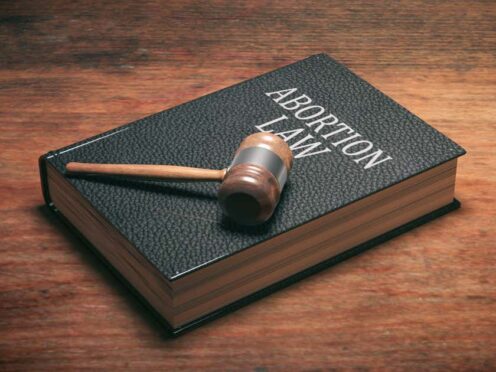
Getting safe access zones outside abortion clinics up and running quickly would be a “quick, easy win” for a new government, campaigners said.
Final guidance on how so-called buffer zones would work under the Public Order Act had been due to be published “no later than spring 2024”.
The Home Office has now said the guidance will not be published before the July election.
It has been more than a year since the Act, as part of which MPs voted to bring in legislation prohibiting protests within 150 metres of clinics or hospitals providing abortion services in England and Wales, received royal assent.
Those supporting the law have raised concerns that it could be watered down in practice if silent prayer is not banned, while anti-abortion groups have said this would threaten their rights to freedom of expression and religious belief.
Draft guidance which went out for consultation in December raised concerns among pro-choice campaigners, with some claiming it did not reflect the debate in Parliament, when MPs voted against attempts to allow silent prayer outside clinics under the new law.
The proposed draft guidance said that prayer itself within the zone “should not automatically be seen as unlawful” and added that “where an individual is praying, but their conduct is also intrusive, this is likely to be an offence”.
In March, Home Office minister Laura Farris rejected the notion that the Government was attempting to “water down” the legislation, but said silent prayer is a “difficult category” when it comes to where the line falls between competing rights and obligations.
Home Secretary James Cleverly previously said the final guidance would be based on feedback from the consultation and added that his department was “very conscious to make sure that the expressed will of Parliament is reflected in the ultimate guidance that is put out”.
While councils can put public spaces protection orders (PSPOs) in place to have an effect similar to safe access zones, pro-choice campaigners have long made the case for the need for national legislation, saying that PSPOs depend on local councils’ willingness, are timebound, can be expensive and result in a postcode lottery.
Heidi Stewart, chief executive of the British Pregnancy Advisory Service (Bpas), said women had been “failed” by the Conservative government and that implementing the zones must be a priority for the election winners.
She said: “It has now been over a year since safe access zones became law in England and Wales, and still no sign of progress.
“It’s not the politicians that suffer from endless delays and obfuscation. It’s the women who have to endure intimidation, harassment and medical misinformation when accessing healthcare. The law is meant to protect them, but this Government has failed them.
“We will be putting pressure on the next government to ensure that the implementation of safe access zones is a priority.”
Louise McCudden, UK head of external affairs at MSI Reproductive Choices, said: “Safe access zones, which protect abortion clinics from harassment, have already been signed into law with cross-party support and are backed by the public.
“It would be a quick, easy win for an incoming government to get safe access zones up and running so that women and others entering abortion clinics can do so confidentially, without fear of harassment.”
Right To Life UK spokeswoman Catherine Robinson said: “If any harassment and intimidation does take place outside abortion clinics, there are already laws in place to prevent this activity. There is no need for draconian legislation that criminalises peaceful activities.
“Hundreds of women have been helped outside abortion clinics by pro-life volunteers who have provided them with practical support, which made it clear to them that they had another option other than going through with the abortion.”

Enjoy the convenience of having The Sunday Post delivered as a digital ePaper straight to your smartphone, tablet or computer.
Subscribe for only £5.49 a month and enjoy all the benefits of the printed paper as a digital replica.
Subscribe